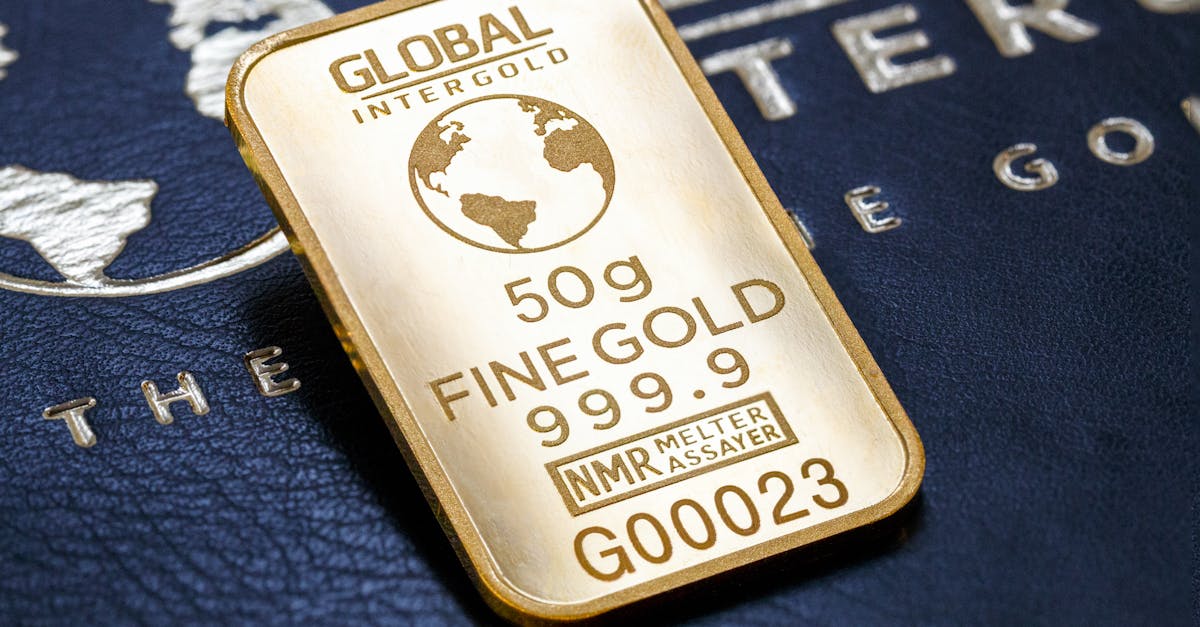Navigating the Gold Market: Timing Your Investments Wisely

Buy Gold Now or Wait: Expert Insights and Analysis
Gold has always been considered a safe haven investment, retaining its value even during times of economic uncertainty. However, with its recent price fluctuations, investors are faced with a dilemma: should they buy gold now or wait for a potential dip? This article aims to answer this question by providing expert insights, analyzing market dynamics, and exploring investment strategies. Stay informed with the latest gold market trends and make confident decisions about your gold investments.
The Golden Opportunity: Understanding the Current Market Dynamics
The gold market is influenced by various economic factors, including inflation, interest rates, and geopolitical events. Understanding these dynamics is crucial for making informed investment decisions. By analyzing historical price fluctuations and current economic indicators, investors can gain insights into the market conditions and potential opportunities.
Expert Perspectives: Buy Now or Wait for the Dip?
Leading gold analysts and industry experts offer valuable perspectives on the timing of gold purchases. Some advocate for buying gold now, citing its potential as a hedge against inflation and geopolitical risks. Others recommend waiting for a dip, anticipating a correction in the market. This article gathers expert opinions and examines their rationale to help investors make informed decisions based on their individual circumstances and risk tolerance.
Key Insights
- Gold has traditionally served as a safe haven asset, offering protection against economic uncertainties.
- Economic factors such as inflation, interest rates, and geopolitical events significantly influence gold’s price movements.
- Including gold in a diversified investment portfolio can help reduce risk and enhance portfolio stability.
- Different investment strategies are available for gold, such as buy and hold, dollar-cost averaging, and hedging, depending on market outlook and investment goals.
- Making an informed decision on whether to buy gold involves considering market forecasts, expert opinions, and personal circumstances.
1. The Golden Opportunity: Understanding the Current Market Dynamics
The Golden Opportunity: Understanding the Current Market Dynamics
Gold has a long history as a valuable asset, often serving as a safe haven during economic uncertainties. To make informed investment decisions, it’s essential to understand the historical price fluctuations of gold and the current economic indicators that influence its value.
Historical Price Fluctuations
Gold prices have traditionally exhibited cyclical patterns, influenced by various economic and geopolitical factors. Over the past decade, gold prices have generally trended upwards, with significant fluctuations along the way. For instance, the price of gold surged during the 2008 financial crisis as investors sought safe haven assets. Conversely, prices declined in the years following the crisis as the global economy recovered.
Current Economic Indicators
Current economic indicators also play a crucial role in shaping gold prices. Inflation, interest rates, and geopolitical events are among the key factors to consider. High inflation can erode the value of paper currencies, making gold more attractive as a store of value. Rising interest rates, on the other hand, can make gold less appealing as alternative investments like bonds become more lucrative. Geopolitical uncertainties, such as wars or political crises, can also drive up gold prices as investors seek a safe haven.
By analyzing historical price fluctuations and monitoring current economic indicators, investors can gain insights into the market context and make informed decisions about their gold investments. Understanding the factors that influence gold prices can help investors identify potential opportunities and navigate the complexities of the gold market.
2. Expert Perspectives: Buy Now or Wait for the Dip?

Expert Perspectives: Buy Now or Wait for the Dip?
Leading gold analysts and industry experts offer diverse perspectives on the timing of gold purchases. Some advocate for buying gold now, while others recommend waiting for a potential dip. Here are some expert insights to consider:
Buy Now Advocates
Proponents of buying gold now argue that the current economic environment is favorable for gold investments. They cite rising inflation, geopolitical uncertainties, and the potential for a stock market correction as reasons to invest in gold as a safe haven asset. They believe that gold’s value is likely to appreciate in the face of these challenges.
Wait for the Dip Advocates
Those who recommend waiting for a dip believe that gold prices may still be overvalued and could experience a correction in the near future. They point to the recent surge in gold prices and the possibility of interest rate hikes, which could make gold less attractive to investors. They suggest waiting for a pullback in prices before making a purchase.
Finding Your Strategy
Ultimately, the decision of whether to buy gold now or wait for a dip depends on your individual investment goals and risk tolerance. If you’re looking for a safe haven asset to protect your portfolio against economic uncertainties, buying gold now may be a wise move. However, if you’re willing to take on more risk in pursuit of higher returns, waiting for a potential dip could be a better strategy. Consider the expert perspectives and your own financial situation to make an informed decision.
3. Economic Factors Shaping Gold’s Value
Economic Factors Shaping Gold’s Value
The price of gold is influenced by a multitude of economic factors, including inflation, interest rates, and geopolitical events. Understanding how these factors impact gold’s value can help investors make informed decisions about their gold investments.
Inflation
Inflation, or the rate at which prices for goods and services are rising, has a significant impact on gold prices. Gold is often seen as a hedge against inflation because its value tends to increase when the value of paper currencies decreases. When inflation is high, investors may turn to gold as a store of value to protect their wealth.
Interest Rates
Interest rates, set by central banks, also play a role in shaping gold prices. When interest rates are low, gold becomes more attractive to investors as an alternative investment to bonds and other fixed-income securities. Conversely, when interest rates rise, the opportunity cost of holding gold increases, making it less appealing to investors.
Geopolitical Events
Geopolitical events, such as wars, political crises, and natural disasters, can also drive up gold prices. During times of uncertainty, investors often flock to gold as a safe haven asset. Gold’s value is perceived to be stable and less susceptible to geopolitical risks compared to other investments.
By staying informed about these economic factors and their potential impact on gold prices, investors can make strategic decisions about when to buy, sell, or hold gold as part of their overall investment portfolio.
4. The Role of Gold in a Diversified Investment Portfolio

The Role of Gold in a Diversified Investment Portfolio
Gold has long been considered a safe haven asset, meaning its value tends to hold steady or even increase during periods of economic uncertainty. This makes it a popular choice for investors looking to diversify their portfolios and reduce risk.
Diversification
Diversification is a key principle of investing, as it helps to spread risk across different asset classes. By including gold in your portfolio, you can reduce your overall portfolio volatility. Gold tends to perform differently than stocks, bonds, and other traditional investments, so it can help to offset losses in other areas of your portfolio.
Safe Haven Asset
Gold’s reputation as a safe haven asset stems from its history of maintaining its value during periods of economic turmoil. When stocks and other investments decline, investors often turn to gold as a store of value. This is because gold is a physical asset that cannot be easily devalued by governments or other entities.
Including gold in your investment portfolio can provide peace of mind and help you weather economic storms. It can act as a buffer against market downturns and preserve the value of your wealth over the long term.
5. Investment Strategies for Different Market Scenarios
Investment Strategies for Different Market Scenarios
The gold market can be unpredictable, so it’s important to have an investment strategy that aligns with your financial goals and risk tolerance. Here are a few strategies to consider:
Buy and Hold
This is a long-term strategy where you purchase gold and hold it for an extended period, regardless of market fluctuations. It’s suitable for investors who believe in gold’s long-term value as a safe haven asset.
Dollar-Cost Averaging
This strategy involves investing a fixed amount of money in gold at regular intervals, regardless of the price. It helps to reduce your average cost per ounce and minimize the impact of market volatility.
Value Investing
This strategy involves buying gold when it’s undervalued and selling it when it’s overvalued. It requires careful market analysis and timing to execute successfully.
Hedging
This strategy involves using gold as a hedge against inflation or other risks. Investors may allocate a portion of their portfolio to gold to protect against potential losses in other asset classes.
Trading
This strategy involves buying and selling gold frequently to profit from short-term price movements. It requires a high level of market knowledge and trading skills.
Choosing the right investment strategy depends on your individual circumstances and investment goals. It’s important to consult with a financial advisor to determine the best approach for you.
6. Market Predictions and Outlook: Forecasting Gold’s Future
Market Predictions and Outlook: Forecasting Gold’s Future
Predicting the future price of gold is a challenging task, but market forecasts and expert opinions can provide insights into potential scenarios. Here’s an overview of some common market outlooks:
Bullish Outlook
Some analysts believe that gold prices will continue to rise in the future. They cite factors such as rising inflation, geopolitical uncertainties, and increasing demand for gold as a safe haven asset.
Bearish Outlook
Other analysts are more cautious, predicting that gold prices may decline in the future. They point to factors such as rising interest rates, a strengthening US dollar, and potential profit-taking by investors.
Neutral Outlook
Some experts take a neutral stance, suggesting that gold prices may move sideways or within a certain range in the future. They believe that the market is currently balanced between bullish and bearish factors.
It’s important to note that these forecasts are just predictions and should not be taken as financial advice. The actual price of gold can be influenced by a wide range of factors, and it’s impossible to predict with certainty what will happen in the future.
7. Taking Action: Making the Informed Decision
Taking Action: Making the Informed Decision
Deciding whether to buy gold now or postpone the decision is a personal choice that depends on your individual circumstances and investment goals. Here are a few key considerations to help you make an informed decision:
Buy Now if:
- You believe that gold is undervalued and has the potential for significant price appreciation.
- You’re looking for a safe haven asset to protect your portfolio against economic uncertainties.
- You have a long-term investment horizon and are comfortable with the potential volatility of gold prices.
Postpone if:
- You believe that gold is overvalued and may experience a correction in the near future.
- You’re primarily interested in short-term gains and are not prepared for potential losses.
- You have a high risk tolerance and are comfortable with investing in more volatile assets.
It’s important to remember that gold is not a risk-free investment. The price of gold can fluctuate significantly, and you could lose money if you sell it for less than you paid for it. Before investing in gold, it’s essential to do your research, understand the risks involved, and consult with a financial advisor if necessary.
Is gold a good investment for beginners?
Gold can be a suitable investment for beginners who are looking to diversify their portfolio and reduce risk. It’s a tangible asset that has historically held its value during periods of economic uncertainty.
How much gold should I invest in?
The amount of gold you invest in depends on your individual financial situation and investment goals. It’s generally recommended to allocate a small percentage of your overall portfolio to gold, typically around 5-10%.
What is the best way to buy gold?
There are several ways to buy gold, including buying physical gold coins or bars, investing in gold ETFs or mutual funds, or trading gold futures or options. The best method for you depends on your investment goals and risk tolerance.
How do I store gold safely?
If you choose to buy physical gold, it’s important to store it securely to prevent theft or loss. Consider storing it in a safe deposit box at a bank or in a secure home safe.
Is it better to buy gold or silver?
Whether to buy gold or silver depends on your investment goals and preferences. Gold is generally considered a more stable and traditional safe haven asset, while silver is more volatile and has industrial applications. Diversifying your investments by including both gold and silver in your portfolio can help reduce risk.
Table of Key Insights
| Key Insight | Description | |—|—| | Gold as a Safe Haven | Gold has historically performed well during periods of economic uncertainty, serving as a hedge against inflation and geopolitical risks. | | Impact of Economic Factors | Factors like inflation, interest rates, and geopolitical events significantly influence the price of gold. | | Diversification Benefits | Including gold in a diversified portfolio can reduce risk and enhance stability, as it tends to perform differently from other asset classes. | | Investment Strategies | Various investment strategies are available for gold, such as buy and hold, dollar-cost averaging, and hedging, tailored to different market outlooks and investment goals. | | Informed Decision-Making | Before investing in gold, consider market forecasts, expert opinions, and personal circumstances to make an informed decision. |
Leave a Reply